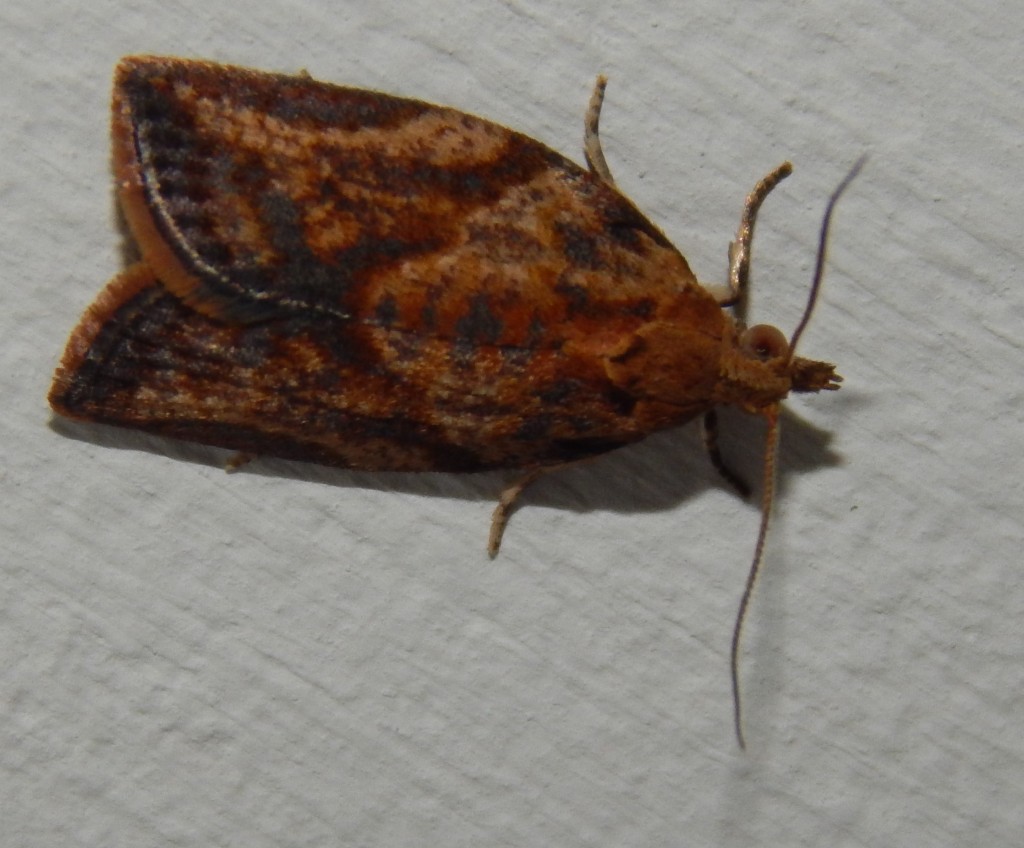
[021] Anania hortulata, the Small Magpie
Introduction
Anania hortulata, the Small Magpie (or Small Magpie Moth) is a large colourful moth in the Grass Moth Family (Crambidae) which, untypically, rests with its wings unfolded. It is one of the largest British moths to be considered a micro-moth.
It should not be confused with Abraxas grossulariata, the Magpie moth from another family that looks very similar but a bit larger; or the Magpie Butterfly; or several other moths called Magpie; or [265] Pica pica, the Magpie (or Eurasian Magpie) or many other birds called Magpies!
Common Names are always difficult but almost anything in the animal kingdom that is wholly or partly black and white tends to be called a Magpie something. I have seen an Australian Magpie, which is not closely related to the corvid Magpie; magpie-larks, which are not larks; magpie-robins, which are not Robins; and Magpie Geese, which aren’t really geese.
I will also be including ‘all other moths,’ but my randomization process means that more moth species are yet to come.
Taxonomy
Kingdom – Animals
Phylum – Arthropods
Class – Insects
Order – Lepidoptera (Butterflies and Moths)
Family – Crambidae (Grass Moths)
Subfamily – Pyraustinae
Genus – Anania
Scientific Name – Anania hortulata
Name
You can see from its colours why it is called a Magpie!
All I can find of the genus name, Anania, is its use as a personal name, from the Biblical name Ananias. ‘Hortulatus’ looks as if it might mean ‘garden.’ With over a hundred species in the genus, the task of naming species sometimes seems to become a bit random.
Description
You will recognize Crambidae from [011] Grass Moths, and being in that family is enough to make Anania hortulata a micromoth. It is the subfamily Pyraustinae, whose members do not look quite like the grass moths we have seen already.
You will understand the difficulties of taxonomy when I tell you what distinguishes this subfamily. The Pyraustinae are characterised by atrophied spinula and venulae in the tympanal organs; a narrow fornix tympani; a longitudinal groove with androconial scales on the male mesothoracic tibiae; an often spinose antrum; a sella (a medially directed clasper on the inside of the valvae), and an editum with modified setae on the male valvae. [Thanks to Wikipedia for that useful information!] This blog is not the place for anatomical details.
The Small Magpie is not completely black and white as its name might suggest. The head and nearby parts of the wings are a bright orange-brown colour. It is much more colourful than its sister species in Anania, most of which are an unimpressive dull grey-brown like most moths.
It rests with its wings displayed, showing the markings on its wings.
Habitat and use
The Small Magpie is found in Europe and North America and is widespread and common in Britain.
The larvae feed on several species including mint, nettle and deadnettle.
Other Notes

I put this picture up to illustrate the need for being observant. These are the doors to one of the main hides at Slimbridge. When I took my pictures, it must have been there for some time and several visitors to the site had been in and out without noticing or disturbing it. It didn’t move as I took my pictures or when I went into the hide and out again.
I suspect that there are much better locations where its markings would have provided good camouflage.
See also
You have to realise that although this moth comes very early alphabetically, it was the last moth in my selection process and am including some miscellaneous other moths into this post. There are two thousand species of moths that you may see in Britain. Most of the moths you are likely to see will fly into your house at night. Here are some that I have seen.
The first two are Carpet Moths. There are many hundreds of moth species called carpet moths from the proclivity of their larvae to eat carpets. All come in the family Geometridae. These are Thera obeliscata, the Grey Pine Carpet and Xanthorhoe fluctuata, the Garden Carpet.


Finally, two very common moths – Hofmannophila pseudospretella, the Brown House Moth from the Oecophoridae, and the Epiphyas postvittana, the Light Brown Apple Moth from the Tortrix family.


The notorious LBAM is native to Australia but has been introduced and become invasive in many counties.
Moth Traps
You can always join the growing number of people whose hobby is trapping moths. You will need a moth trap, which is not much more than a big box with a powerful light to attract the moths, normally kept outside somewhere. Many are now available commercially.
If you leave the light on overnight, you can see and record what has arrived next morning. Your catch will be affected by the time of the year and the weather conditions but you can expect some moths almost every night, sometimes dozens of different species. If you are keen on entomology in general you may also catch caddisflies, beetles, wasps and hornets and other insects.
